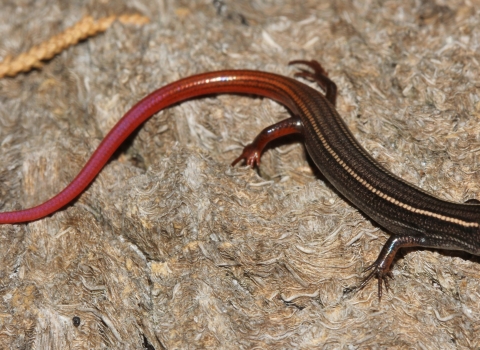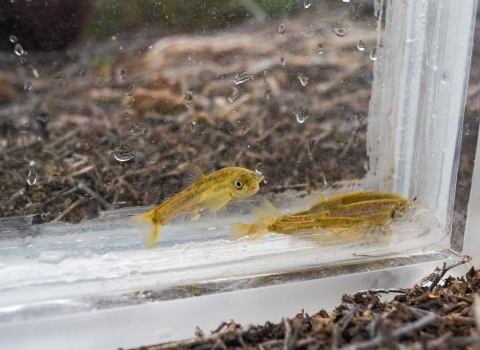Duck populations have increased in overall abundance over last year, and their habitat conditions have improved, according to the U.S. Fish and Wildlife Service’s Trends in Duck Breeding Populations 2014 report released today. These conclusions are based on the 2014 Waterfowl Breeding Population and Habitat Survey conducted by the U.S. Fish and Wildlife Service and Canadian Wildlife Service. The annual duck survey encompasses more than 2 million square miles of waterfowl habitat across Alaska, north-central and northeastern U.S. states, and south-central, eastern and northern Canada.
The preliminary estimate for the total duck population is 49.2 million birds, an 8 percent increase over last year’s estimate of 45.6 million birds, and 43 percent above the long-term average.
The report also provides abundance estimates for individual duck species, including mallard, blue-winged teal, northern pintail, American wigeon, lesser and greater scaup, and canvasback, all of which are similar to or slightly above last year’s totals. Most species’ populations, such as mallard and blue-winged teal, remain significantly above the long-term average, while others, including scaup and pintail are still below.
- Estimated mallard abundance is 10.9 million birds, similar to last year’s estimate of 10.4 million birds and 42% above the long-term average.
- Blue-winged teal estimated abundance is 8.5 million, which is 10% above the 2013 estimate of 7.7 million, and 75% above the long-term average.
- The northern pintail estimate of 3.2 million was similar to last year’s estimate of 3.3 million, and remains 20% below the long-term average.
- American wigeon were 18% above the 2013 estimate and 20% above the long-term average.
- The combined (lesser and greater) scaup estimate of 4.6 million was similar to 2013 and 8% below the long-term average of 5 million. The canvasback estimate of 685 thousand was slightly lower than the 2013 estimate of 787 thousand, but was 18% above the long-term average.
Habitat conditions assessed during the survey were mostly improved or similar to last year as a result of average to above-average annual precipitation. The total pond estimate (prairie Canada and U.S. combined) was 7.2 million ponds, 40 percent above the long-term average. The majority of Canadian prairies had below to well below average winter temperatures and average precipitation. Southern Manitoba benefitted from last year’s higher summer and fall precipitation, whereas southern Saskatchewan and most of Alberta were aided by higher spring 2014 precipitation. In the U.S. prairies, habitat conditions improved in the western Dakotas and Montana from 2013, but remained similar in the eastern Dakotas.
The annual Waterfowl Breeding Population and Habitat Survey guides the Service’s waterfowl conservation programs under authority of the 1918 Migratory Bird Treaty Act. Waterfowl population surveys and monitoring programs are critical components of successful waterfowl management, and a reflection of the Service’s commitment to generating high quality scientific data to inform conservation planning.
For more information about the surveyed areas, the survey methodology and the estimates, the Trends Report in Duck Breeding Populations, 1955-2014 can be downloaded from the Service’s website at www.fws.gov/migratorybirds. Visit www.www.flyways.us/status-of-waterfowl/pilot-reports for pilot biologists’ flight blogs.


